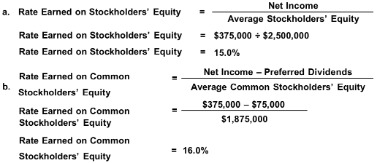Bookkeeping
Simple and Compound Interest Calculator

Interest may compound on a daily, monthly, annual or continuous schedule. To assist those looking for a convenient formula reference, I’ve included a concise list of compound interest formula variations applicable to common compounding intervals. Later in the article, we will delve into each variation separately for a comprehensive understanding. Annual Interest Rate (ROI) – The annual percentage interest rate your money earns if deposited.
Enter your initial amount, contributions, rate of return and years of growth to see how your balance increases over time. This formula is the projected rate of return on an asset or investment, even if it does mm millions definition examples what mm means not explicitly pay compounded interest. The CAGR is a form of the compound interest formula, but rearranged algebraically to solve for the interest rate using the beginning balance, ending balance and number of periods.
How to use the compound interest formula
With regular interest compounding, however, you would stand to gain an additional $493.54 on top. Compounding can help fulfill long-term savings and investment goals, especially if you have time to let it work its magic over years or decades. If you left your money in that account for another year, you’ll earn $538.96 in interest in year two, for a total of $1,051.63 in interest over two years. You earn more in the second year because interest is calculated on the initial deposit plus the interest you earned in the first year.

Retirement Calculators
With the compound interest formula, you can determine how much interest you will accrue on the initial investment or debt. You only need to know how much your principal balance is, the interest rate, the number of times your interest will be compounded over each time period, and the total number of time periods. Compound interest is the formal name for the snowball effect in finance, where an initial amount grows upon itself and gains more and more momentum over time. It is a powerful tool that can work in your favor when saving, or prolong repayment for debts. Compound interest is often referred to as “interest on interest” because interest accrued is reinvested or compounded along with your principal balance. It is the interest earned on both the initial sum combined with interest earned on already accrued returns.
Unlike simple interest, which is calculated only on the principal, compound interest is calculated on both the principal and the accumulated interest. This compounding effect causes investments to grow faster over time, much like a snowball gaining size as it rolls downhill. You can look at your loan or credit card disclaimer to figure out if your interest is being compounded and at what rate. To calculate the ending balance with ongoing contributions (c), we add a term that calculates the value of ongoing contributions to the principal balance.
What is the compound interest formula?
- Enter the principal amount, interest rate, time period, and click ‘Calculate’ to retrieve the interest.
- You can look at your loan or credit card disclaimer to figure out if your interest is being compounded and at what rate.
- Or,you may be considering retirement and wondering how long your money might last with regular withdrawals.
- Total Deposits – The total number of deposits made into the investment over the number of years to grow.
______ Addition ($) – How much money you’re planning on depositing daily, weekly, bi-weekly, half-monthly, monthly, bi-monthly, quarterly, semi-annually, or annually over the number of years to grow. The compounding of interest grows your investment without any further deposits, although you may certainly choose to make more deposits over time – increasing efficacy of compound interest. This flexibility allows you to calculate and compare the expected interest earnings on various investment scenarios so that how to find the present value of an annuity you know if an 8% return, compounded daily is better than a 9% return, compounded annually. When you invest in the stock market, you don’t earn a set interest rate, but rather a return based on the change in the value of your investment. See how your savings and investment account balances can grow with the magic of compound interest.
The easiest way to take advantage of compound interest is to start saving! Just enter your beginning balance, the regular deposit amount at any specified interval, the interest rate, compounding interval, and the number of years you expect to allow your investment to grow. To how to file a tax extension for a federal return illustrate the effect of compounding, let’s take a look at an example chart of an initial $1,000 investment.
Interactive compound interest formula
Much like a snowball at the top of a hill, compound interest grows your balances a small amount at first. Like the snowball rolling down the hill, as your wealth grows, it picks up momentum growing by a larger amount each period. The longer the amount of time, or the steeper the hill, the larger the snowball or sum of money will grow.